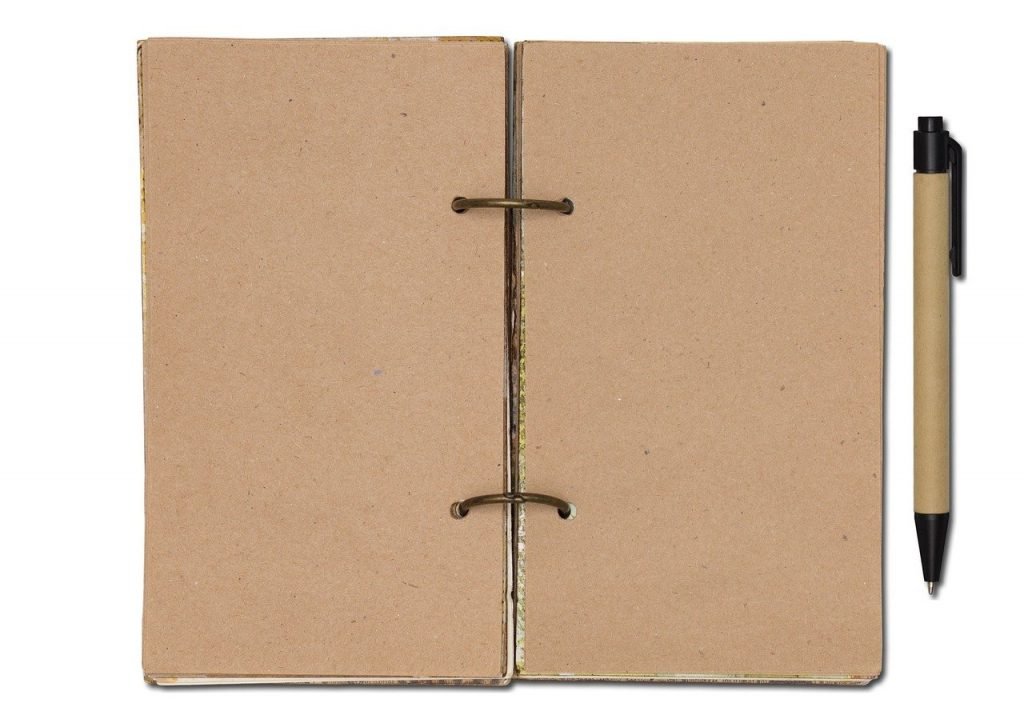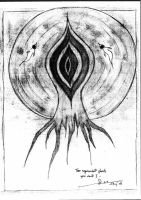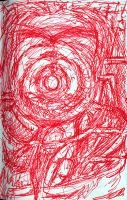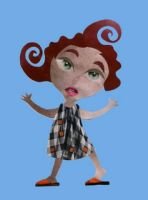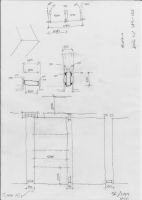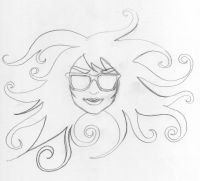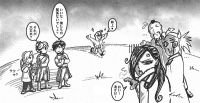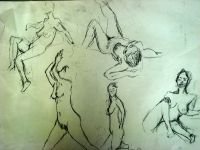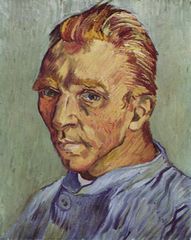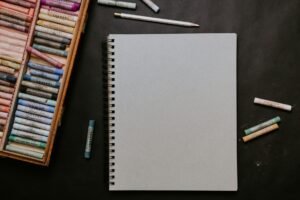Why Your Sketchbook Choice Actually Matters
Let’s face it: Choosing the Right Sketchbook can be tricky. With so many options out there, how do you decide which one is right for you? Whether you’re a beginner doodling for fun or a pro chasing your next masterpiece, finding the right sketchbook is all about matching it to your creative style and needs.
Here’s the good news—it’s not as overwhelming as it seems! We’re going to break this down so you can make an informed (and stress-free) choice.
Your Sketchbook Sets the Foundation for Your Art
A sketchbook is more than just a collection of bound pages—it’s the space where your creativity unfolds. Choosing the right one ensures that your tools work with your artistic process, rather than against it.
Material Matters: The Right Paper for the Right Medium
Not all paper is created equal. Different sketchbooks are designed for specific artistic techniques, and selecting the wrong type can lead to frustration.
Key Considerations When Choosing Paper
- Weight & Thickness: Thin paper (under 100gsm) crinkles easily, while thicker paper (above 200gsm) supports wet media like watercolor.
- Texture & Tooth: Smooth paper is ideal for pen, ink, and graphite, while textured paper works well for charcoal and pastels.
- Absorbency: High-absorbency paper prevents watercolor from pooling, while low-absorbency surfaces help markers stay crisp without bleeding.
Matching your medium to the right paper ensures better control, cleaner results, and a smoother workflow.
Sketchbooks Influence Your Creative Comfort
Your sketchbook isn’t just a tool—it’s your workspace. A poorly chosen sketchbook can feel restrictive, while the right one enhances your artistic freedom.
Why Comfort Matters in Sketchbook Selection
- Binding style affects usability: Spiral-bound sketchbooks allow for easy page flipping, while stitched-bound books give a sturdy surface for full-page compositions.
- Size impacts portability: Large sketchbooks provide room for expansive ideas, while smaller ones are perfect for quick sketches on the go.
- Paper tone influences perception: White paper is crisp and bright, toned paper adds built-in contrast, and black paper creates dramatic highlights.
A thoughtfully chosen sketchbook enhances not just your artwork, but your overall artistic experience.
Choosing the Right Sketchbook Elevates Your Creative Process
An artist’s sketchbook serves as a reflection of their unique style and workflow. Selecting one that supports your techniques, fits your creative comfort, and complements your artistic needs ensures that every sketching session is both productive and enjoyable.
Sketchbooks.org | VISUAL RESEARCH HUB
Sketchbooks
Visual research is critical for any creative endeavor. We have compiled specialized links to lead you directly to images, videos, and inspiration for "Sketchbooks" across the web's best visual search platforms.
Types of Sketchbooks: What Are Your Options?
Choosing the right sketchbook depends on your artistic style, workflow, and creative needs. Whether you’re sketching casually or working on polished compositions, each type offers unique advantages.
Hardcover vs. Softcover
Hardcover Sketchbooks: Durability & Stability
A hardcover sketchbook provides rigid support, making it an excellent choice for outdoor sketching, travel, and detailed work. The sturdy surface allows artists to work without needing a table, making it ideal for field studies.
Softcover Sketchbooks: Flexibility & Portability
Softcover options are lightweight, easy to carry, and adaptable, perfect for spontaneous sketches. Since they’re less structured, they encourage quick, loose creative exploration, making them great for experimenting with new techniques.
Spiral-Bound vs. Perfect-Bound
Spiral-Bound Sketchbooks: Easy Page Flipping
Spiral-bound sketchbooks offer flat openings, allowing artists to work across double-page spreads without restrictions. This format is great for storyboards, wide compositions, and technical sketches, but the metal spirals can sometimes interfere with clean edges.
Perfect-Bound Sketchbooks: Professional & Sleek
Perfect-bound sketchbooks give a refined, elegant look, often favored for presentation purposes. However, since they don’t always lay flat, they might limit the flow of certain designs, especially for detailed illustrations.
Pocket-Sized vs. Large Format
Pocket-Sized Sketchbooks: Compact & Convenient
Designed for on-the-go creativity, pocket-sized sketchbooks are perfect for quick sketches, spontaneous ideas, and field notes. Their size makes them ideal for capturing details in everyday moments.
Large Format Sketchbooks: Expansive & Expressive
Large-format sketchbooks provide plenty of space for bold compositions, detailed studies, and layered sketches. These are best for large-scale concepts, intricate renderings, and unrestricted creative freedom.
Each sketchbook type supports different creative needs, ensuring you have the right surface for your artistic approach.
What’s the Deal With Paper Types?
Why Paper Choice Matters in Your Sketchbook
Paper isn’t just a surface—it’s part of the creative process. The wrong type can leave your tools smudging, bleeding, or warping, while the right paper enhances your technique and artistic expression.
Understanding Paper Weight: Thickness & Durability
Paper weight determines how much media a page can handle before buckling, tearing, or bleeding.
Which Weight Works Best for Your Art?
- Lightweight (around 90gsm): Ideal for pencil and pen, but struggles with wet media like watercolor.
- Medium Weight (around 150gsm): A reliable option for ink, markers, or light watercolor washes, offering good versatility.
- Heavyweight (200gsm or higher): Designed for watercolor, acrylics, and mixed media, preventing warping and bleed-through—this is your go-to for durability.
Choosing the right weight ensures smooth application and controlled results, keeping your sketchbook practical for your techniques.
Exploring Paper Texture: The Surface Your Art Interacts With
The paper’s texture, or tooth, affects how materials behave—from crisp ink lines to soft blending techniques.
Textures & Their Best Uses
- Smooth (Hot-Pressed): Perfect for detailed ink work, fine pencil lines, and controlled shading.
- Textured (Cold-Pressed): Adds depth to watercolor, pastels, and charcoal, creating a natural grain for expressive work.
- Rough: Designed for bold strokes, dry media, and dramatic effects, making it great for charcoal and heavy textures.
Matching your style to the right texture ensures your materials work with—not against—your creative flow.
Choosing Paper That Supports Your Artistic Vision
Whether sketching with delicate ink lines or bold washes of color, the right paper type makes all the difference. Selecting the best weight and texture ensures better results, letting you focus on creating, rather than adjusting for limitations.
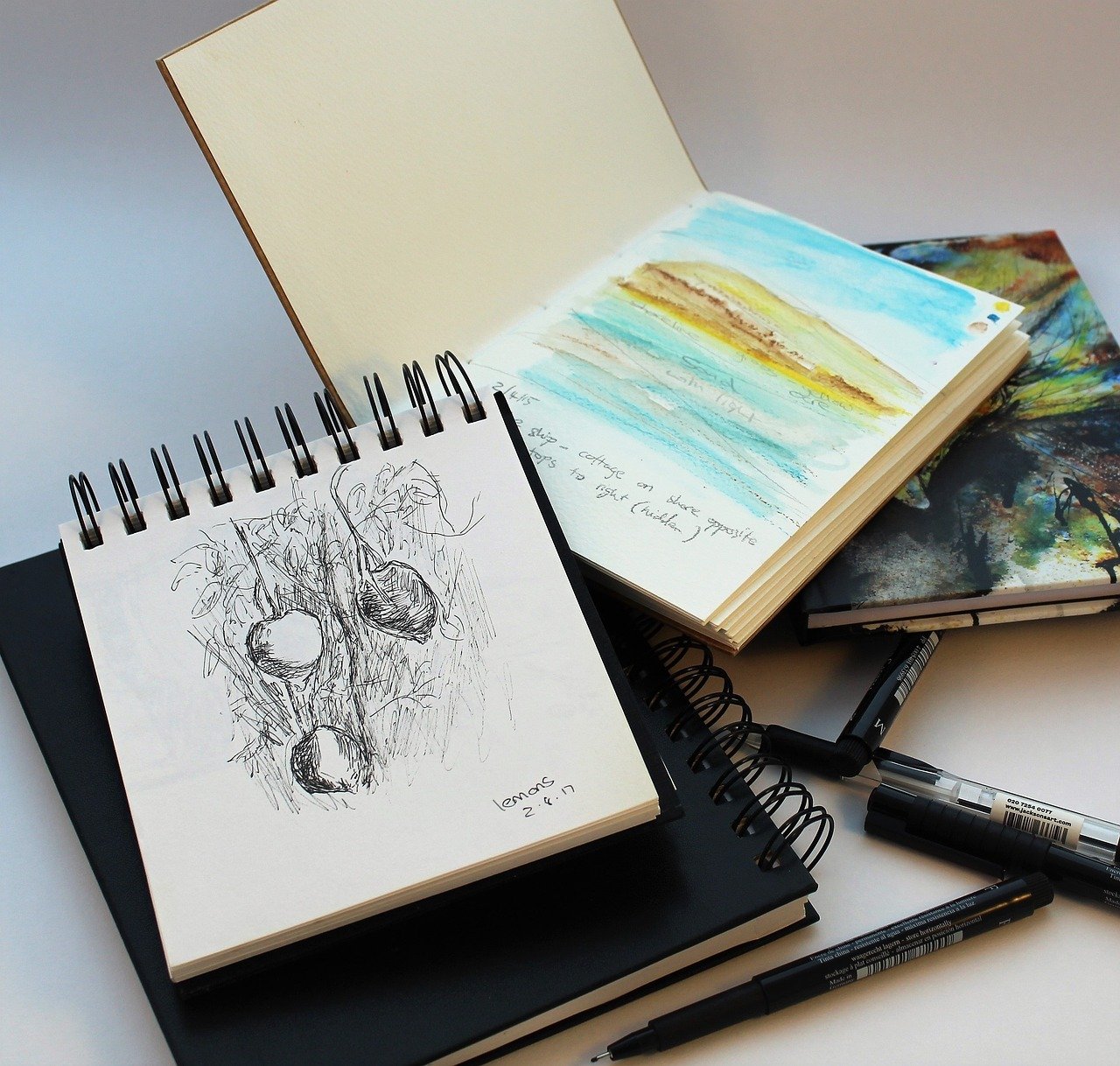
How to Match Your Sketchbook to Your Medium
Your Sketchbook Should Complement Your Artistic Technique
Different artistic mediums require specific paper qualities to perform at their best. A sketchbook that aligns with your tools enhances precision, prevents frustration, and improves overall results.
Watercolor Artists: Thickness & Absorbency Matter
Watercolor requires paper that can withstand heavy washes without warping or tearing.
Best Sketchbook Qualities for Watercolors
- Heavyweight paper (200gsm or higher) to prevent buckling.
- Cold-pressed texture for controlled pigment absorption and natural blending.
- Bound or loose-leaf options with pages treated for water resistance.
Opting for watercolor-ready sketchbooks ensures rich, smooth color application without paper damage.
Pen & Ink Artists: Smooth Surfaces for Clean Lines
Ink flows best on non-textured paper, avoiding feathering, bleeding, or uneven strokes.
Best Sketchbook Qualities for Pen & Ink Work
- Smooth (hot-pressed) paper for crisp, clean lines.
- Medium to heavyweight options (150–200gsm) to prevent ink soaking through.
- Low absorbency surface to ensure sharp details without unwanted smudging.
Choosing high-quality, smooth paper makes linework precise and professional, ensuring ink behaves as intended.
Pencil Artists: Flexibility in Texture & Detail
Graphite and colored pencils work well on both smooth and textured papers, depending on the artist’s style.
Best Sketchbook Qualities for Pencil Work
- Smooth paper for fine lines, precision shading, and detailed rendering.
- Lightly textured (cold-pressed) paper for soft shading, depth, and expressive strokes.
- Medium-weight paper (120–150gsm) offering good erasure control without tearing.
Selecting the right paper texture for your preferred pencil techniques enhances blending, detail retention, and sketch fluidity.
Finding the Perfect Sketchbook for Your Medium
Matching your tools to the right paper ensures cleaner results, smoother application, and an enjoyable creative process. Whether working in watercolor, ink, or pencil, a well-chosen sketchbook supports your technique and lets your art shine.
Extras You Might Not Have Thought About
Unique Features That Elevate Your Sketchbook Experience
Beyond basic paper and binding options, some sketchbooks offer additional features that can enhance your creative process. Considering these extras ensures you choose a sketchbook that matches your workflow and artistic style.
Toned Paper: Adding Depth & Contrast
If you’ve never worked with toned paper, it’s worth exploring. Instead of plain white pages, toned paper comes in shades like gray, tan, or even blue, offering a unique backdrop for sketches.
Why Toned Paper is a Game-Changer
- Provides instant contrast, making highlights and shadows more dynamic.
- Reduces eye strain, especially for extended sketching sessions.
- Works well for graphite, ink, colored pencils, and charcoal, letting details pop.
A toned sketchbook reshapes how you approach value and depth, adding a fresh perspective to your drawings.
Mixed Media: Versatility Without Limits
For artists who switch between different mediums, a mixed-media sketchbook offers flexibility. These sketchbooks are built to handle everything from watercolors to ink, making them ideal for experimentation.
What Makes Mixed Media Sketchbooks Unique?
- Mid to heavyweight paper (160–250gsm) prevents warping with wet media.
- Designed for layering techniques, whether using markers, gouache, or graphite.
- Helps blend disciplines—perfect for combining digital concepts with traditional art.
A mixed-media sketchbook encourages creative exploration, letting artists push beyond single-medium limitations.
Eco-Friendly Options: Sustainable Sketching
If sustainability matters in your workflow, consider eco-friendly sketchbooks made with recycled materials, responsibly sourced paper, or plant-based inks.
Benefits of Choosing an Eco-Friendly Sketchbook
- Supports environmentally conscious production.
- Often acid-free, ensuring artwork longevity.
- Some options include natural fibers, giving pages a distinctive texture.
Sustainable sketchbooks allow artists to create responsibly while maintaining high-quality paper and durability.
Exploring Unique Features to Elevate Your Sketching Experience
Choosing a sketchbook with specialized features ensures that your tools, techniques, and creative needs align perfectly. Whether experimenting with toned paper, mixed media, or sustainable materials, these extras expand artistic possibilities while making sketching more enjoyable.
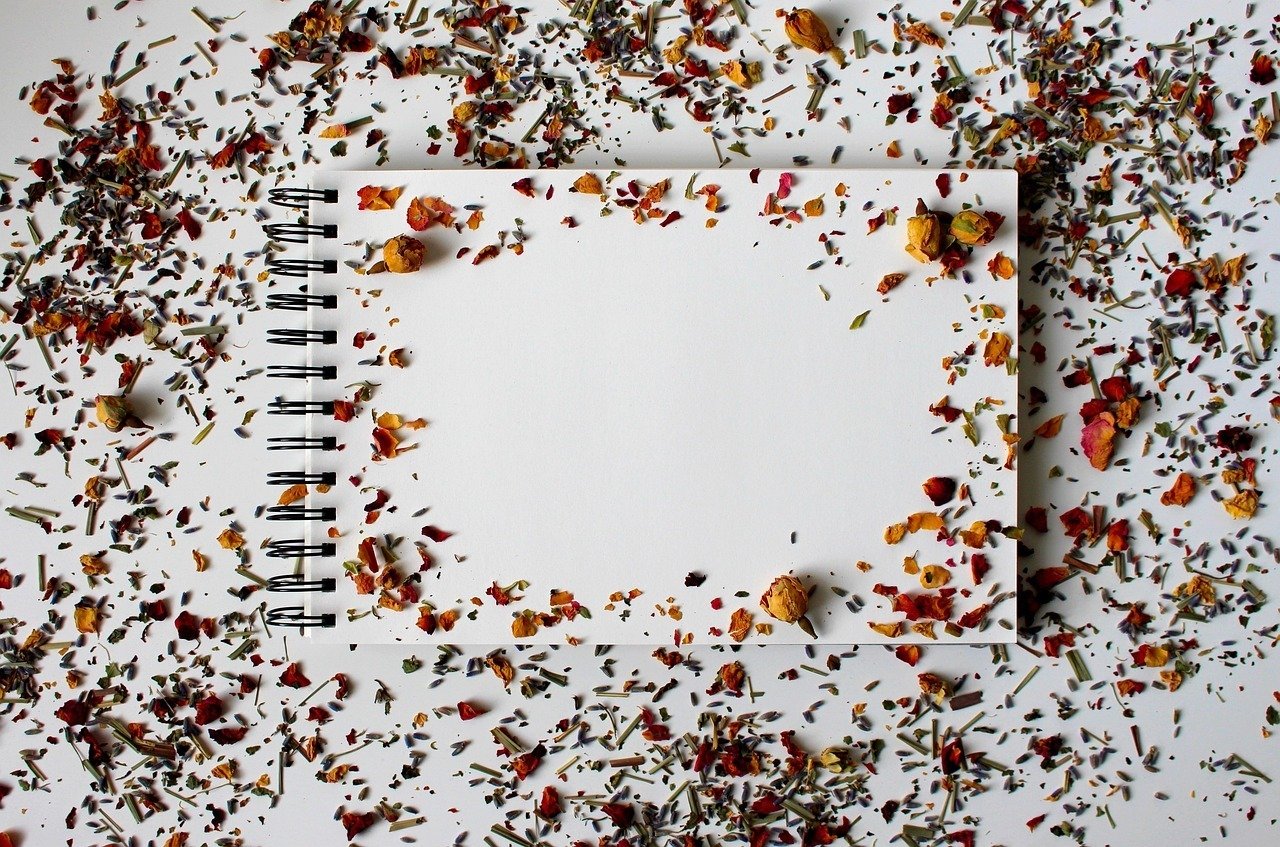
Pro Tips for Choosing the Perfect Sketchbook
A Thoughtful Approach Leads to the Best Fit
Finding the right sketchbook isn’t just about grabbing the first one on the shelf—it’s about ensuring it aligns with your creative workflow, artistic preferences, and long-term goals. Here’s how to make the best choice.
Start With Your Goals: Define Your Purpose
Before selecting a sketchbook, consider how you plan to use it.
Questions to Ask Yourself
- Will this be for quick doodles, structured studies, or final pieces?
- Do I need paper that handles wet media, detailed line work, or mixed techniques?
- Am I prioritizing portability, durability, or experimental freedom?
Clarifying your intended use helps eliminate options that won’t serve your creative needs.
Test It If You Can: Feel the Paper First
If you’re shopping in person, don’t skip the hands-on test—it can make a huge difference.
How to Test a Sketchbook Before Buying
- Run your fingers over the paper to check smoothness or texture.
- Lightly rub a pencil, pen, or marker to see how the paper reacts.
- Flip through to inspect binding strength, page flexibility, and bleed-through potential.
A quick test ensures your materials work effortlessly with your chosen paper type.
Experiment and Have Fun: Discover What Works Best
Your first sketchbook doesn’t need to be perfect—art is about exploration.
Why Trying Different Types Helps
- Exposes you to new textures, paper tones, and binding styles.
- Helps refine preferences for future sketchbooks.
- Encourages creative risk-taking, unlocking unexpected techniques.
A sketchbook is your creative space, so embracing a little trial and error ensures you find what truly enhances your process.
Selecting the Right Sketchbook Should Be an Enjoyable Process
With clear goals, hands-on testing, and a willingness to experiment, finding a sketchbook that aligns with your artistic vision becomes effortless. The perfect fit is out there—you just have to explore a little to find it.
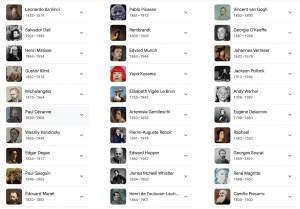
Sketchbooks.org | ART REPORTING | NEWS
Top 10 Famous Sketchbook Artists
Sketchbooks are windows into an artist's creative soul... ...offering a raw and intimate glimpse of their artistic process. In this list, we celebrate the "Top 10 Famous Sketchbook Artists" who have left an indelible mark...
Where to Find the Best Sketchbooks
Exploring Your Options: In-Store vs. Online
Sketchbooks come in a wide range of styles, bindings, and paper types, and knowing where to shop can make a difference in finding the right fit for your creative process.
Art Supply Stores: Hands-On Selection
Shopping in-store allows direct interaction with sketchbooks, letting you feel the paper, test the texture, and inspect quality before buying.
Advantages of Buying In-Store
- Physical testing: Flip through pages, check binding, and rub a pencil or pen to feel the surface.
- Immediate availability: No shipping delays—you walk out with your sketchbook the same day.
- Knowledgeable staff: Some stores have art experts who can recommend sketchbooks based on your medium.
If you prioritize hands-on evaluation, visiting a local art store or craft shop might be the best option.
Online Retailers: Convenience & Variety
Ordering online offers wider selection, detailed reviews, and competitive pricing, making it ideal for specialty sketchbooks that may not be available in local shops.
What to Look for When Buying Online
- Customer reviews: Check for insights on paper quality, durability, and how different mediums perform.
- Brand reputation: Established brands like Strathmore, Moleskine, or Stillman & Birn often guarantee consistent quality.
- Return policies: Some retailers offer easy returns if a sketchbook doesn’t match your expectations.
Online shopping is especially useful for finding unique sketchbooks designed for specific techniques or premium materials.
Balancing Price & Quality: What’s Worth Investing In?
While budget-friendly options exist, a quality sketchbook enhances the creative experience, offering longer durability, smoother paper performance, and better compatibility with your medium.
Tips for Getting the Best Value
- Avoid low-cost sketchbooks that sacrifice paper integrity or binding strength.
- Consider mid-range options from trusted brands to ensure quality without overspending.
- Look for bulk deals or multi-pack options if you sketch frequently and need extras.
Finding the Right Sketchbook Should Be Easy & Enjoyable
Whether buying in-store or online, selecting a high-quality, well-matched sketchbook ensures a smoother artistic process, better results, and long-term satisfaction.
Wrapping It Up | Your Sketchbook, Your Rules
Your sketchbook is a reflection of your artistic journey—it should feel comfortable, inspiring, and suited to your creative style. Whether you prefer smooth paper for precision, textured pages for depth, spiral-bound flexibility, or hardcover durability, finding the perfect sketchbook is a personal choice that enhances your workflow.
Embrace Exploration & Creativity
Don’t be afraid to experiment with new formats, unexpected textures, and alternative materials—the best sketchbook is the one that fuels your imagination and makes you eager to create.
So, take the leap, pick a sketchbook that excites you, and let your creativity flourish on every page!
Ready to Share Your Work?
